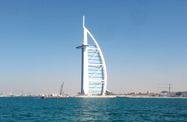Dubai’s diverse theme park offering is paying dividends, with rising footfall in the segment supporting increased tourism revenue, thereby offsetting slower growth in other areas of the sector.

The region’s largest theme park attraction, Dubai Parks and Resorts, reported a 33% year-on-year increase in visitor numbers in the first nine months of 2018, attracting 1.96m guests, according to the destination’s operator, DXB Entertainments.
The ongoing development of the family entertainment segment is set to translate into increased revenue across the hospitality sector and beyond, according to Mohamed Almulla, CEO and managing director of DXB Entertainments, which operates Dubai Parks and Resorts along with other attractions and entertainment assets in the emirate.
“Visits by theme park tourists will contribute towards increasing the 3.5-day average length of stay in Dubai,” Almulla told OBG. “Boosting family oriented tourism will encourage an increase in spending and repeat visits.”
To this point, the occupancy rate of Lapita Hotel – a Polynesian-themed family hotel that forms part of the complex – rose by 97% during the same period, from 30% last year to 59% this year.
Tourist numbers rise but at slower rate
While Dubai’s major theme parks have seen a marked increase in visitor numbers, growth in overall tourism figures has been less pronounced.
Dubai welcomed 10.44m international visitors in the first eight months of 2018, compared to 10.40m during the same period in 2017. The more subdued growth in overall visitors can be in part related to the strength of the US dollar – to which the UAE dirham is pegged – which weighed on demand from emerging markets and increased travel costs for some tourists.
Meanwhile, hotel occupancy rates and revenues have dropped marginally, with occupancy rates shifting from 76% in August 2017 to 75% in August 2018, and average room revenue falling by Dh24 ($6.54), according to the Department of Tourism and Commerce Marketing.
This shift can be largely explained by an increase in supply relative to demand, with the number of star-rated hotels rising from 680 to 703 during this period, lifting the number of available rooms by 6%.
Diversified sector offering key to long-term development
While overall industry performance appears stable, the recent rise in theme park attendance highlights the strong growth potential of specific markets.
“Diversifying source markets is key to ensuring sustained growth,” Samir Hamadeh, general manager of domestic tourism firm Alpha Destination Management, told OBG. “Boosting niche markets such as senior tourism could be a good strategy to increase revenues in the sector, as senior citizens often have more disposable income and – given ageing populations in Western countries – there is a wide market for that niche.”
As part of an effort to better leverage this market, visas enabling multiple entry into the UAE for passengers arriving on cruise ships – many of whom are part of the older demographic – have been made available. This policy dovetails with an initiative undertaken by the Dubai Cruise Terminal to cut port fees by 50% to encourage more cruise lines to make use of Dubai as a port and a base for regional operations.
These efforts appear to be garnering results already, with the number of cruise ship passengers rising by 96% between the 2013-14 and 2016-17 tourist season.
The authorities expect this trend to continue, forecasting that 725,000 cruise ship tourists will pass through Dubai in the 2018-19 season, which started in late October. Furthermore, this figure is projected to rise to 825,000 in 2019-20.
This growth puts Dubai on track to achieve its target of 1m cruise ship tourists in 2020-21, when Carnival Cruises, in partnership with holding company Meraas, plans to open a new terminal in Dubai Harbour before the start of the season. The new development, announced in May of this year, is slated to have a 1-km quay that accommodates three vessels and up to 13,200 passengers at a time.


